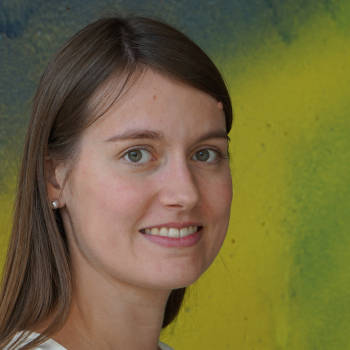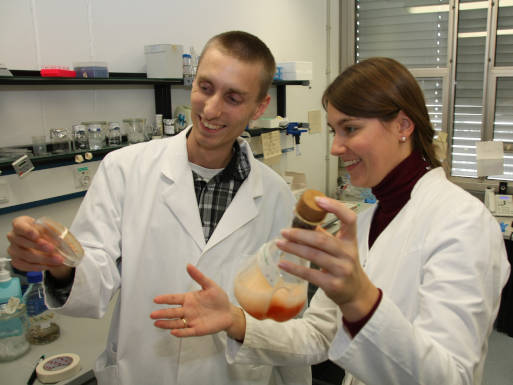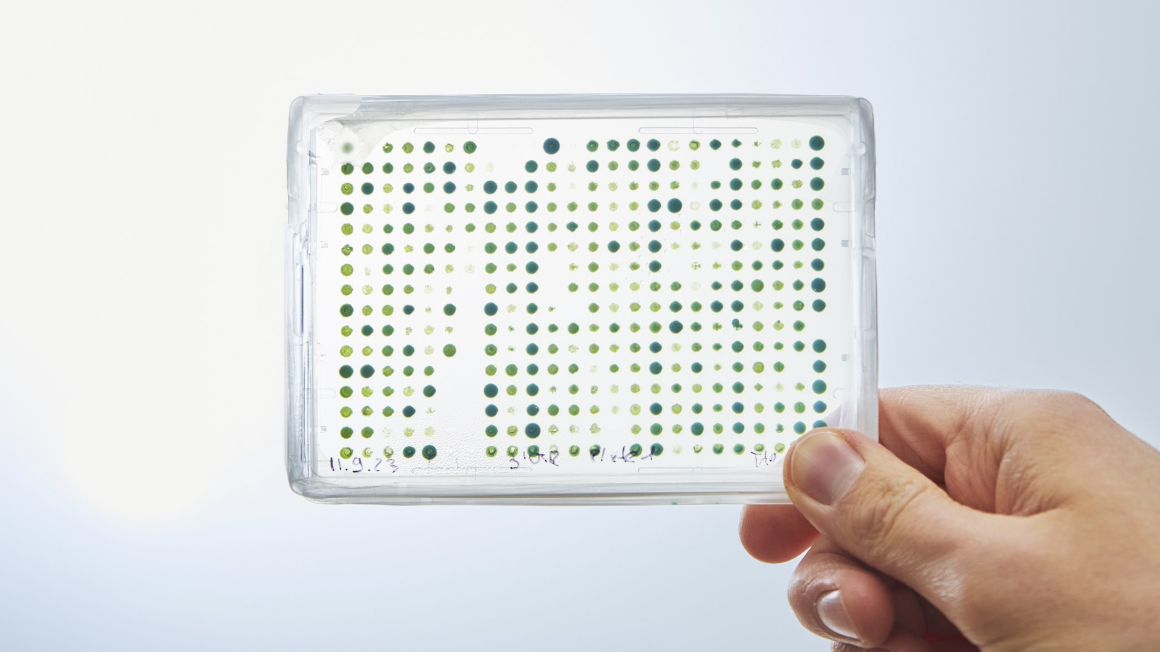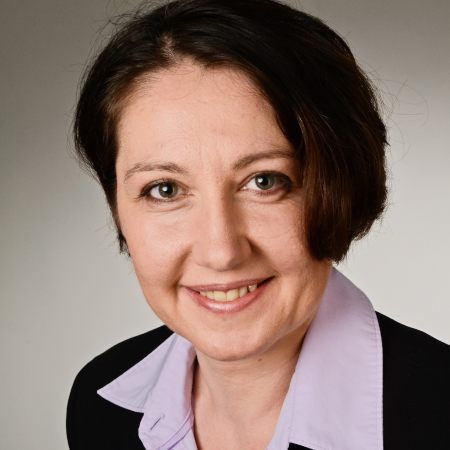Bacteria as pigment factories
Nadja Alina HenkeProfession:
Systems biologist
Position:
CEO Biotech Start-up Bicomer, Bielefeld

Profession:
Systems biologist
Position:
CEO Biotech Start-up Bicomer, Bielefeld

Systems biologist Nadja Alina Henke uses bacteria as cell factories to produce the red pigment astaxanthin. Now, the 28-year-old hopes to bring the process to market with her start-up company Bicomer.
Nadja Henke has a great job: she brings color into life - at least in animal feed and cosmetics. The young systems biologist is developing a sustainable process in which bacteria produce the antioxidant pigment astaxanthin under economic conditions.
Research for application
"I'm curious about biology and nature independently of my career," says the 28-year-old. She had already had a penchant for nature in her high school years. "I was already certain that I would study biology," she recalls. She did so at the University of Bielefeld. Once again, she quickly realised where she wanted to go next: molecular biology. "I wanted to do something meaningful in my career and also found the abstraction exciting - there are many things you don't see," she explains her decision.
Early in her studies, she worked intensively with bacteria. "I was fascinated by bacteria because experiments can be carried out quickly," said Henke explaining what distinguishes this field from other areas of biology. She is doing her master's degree in genome-based systems biology and is finally doing her doctorate at the Centre for Biotechnology (CeBiTec) under Volker Wendisch – still at the University of Bielefeld, in the region which is her home.
Astaxanthin is in high demand
The biologist has been working with pigments for even longer than with microorganisms. Initially, she studied flavonoid synthesis in the favourite organism of plant researchers, the thale cress. In her master's thesis, she started focusing on carotenoid biosynthesis in bacteria. Carotenoids form a large group of pigments, many of which also have excellent antioxidative properties. "I finally got hooked on astaxanthin," said Henke.
"Astaxanthin is a substance that has been given a lot of attention," continues the researcher. The red-violet carotenoid is used as a feed in fish farming, but is also an ingredient in cosmetics. The antioxidant effect of the pigment protects the skin from UV rays better than vitamin E. In fish, the carotenoid also has a positive effect on immune defence and fertility. Above all, however, it gives salmon its reddish colour, which the animals get in nature by eating small crustaceans. The small crustaceans, in turn, receive the pigment from green algae they eat. They are also the only alternative source to obtain astaxanthin without synthesizing the pigment from petroleum.
Bacteria as an alternative to petroleum and algae
Or rather, they "were" the only alternative source, for Henke is in the process of establishing a second alternative. "My predecessor at the university analyzed the pigmented bacterium Corynebacterium glutamicum and found that the staining was caused by a carotenoid," said the systems biologist. An exciting discovery because: "Corynebacterium glutamicum is industrially established because it has been used for the production of amino acids for more than 60 years," said Henke. "If we normally discover something in research, it's exotic and difficult to handle."
Invitation to business plan competition
After her doctorate, things took a whole new turn for Henke: she started to refine the process with a start-up. "The trigger was an e-mail from a business plan competition," she recalls. "I felt challenged, because I had no clue about it and could learn something." It helped that the production organism had already been adapted for industrial use and that she had support from Professor Wendisch, a real expert on the corynebacterium.
During her doctorate, she held initial talks with business angels and sponsors. "Everyone encouraged me to commercialize the process." And so she started by writing a grant application. "We have to move from proof-of-principle to a fully developed industrial base," she describes the challenge. In January, she received funds from the EU's ERDF programme for 18 months to work with two staff members to advance her project as the university spin-off "Bicomer". "It is still too early for customers or investors," explains the 28-year-old, "although the market is hot and many customers are requesting samples."
Systems biologist Nadja Henke is developing a process to produce the pigment astaxanthin with corynebacteria.

Start-up growth in sight
On the scientific side, it is now a matter of further optimizing the strain and adjusting the process parameters. But for Henke, the commercial aspect is also a priority. "With our 20-liter fermenters, it is difficult for us to realize even kilogram scales" - but that would be crucial in order to win customers. The young founder is therefore planning to acquire a larger funding project. "We need certification of established quality checks, feeding studies and authorisation. That is time-consuming and costly." In a few years, the product is expected to be mature and authorized. The team would have to grow to include an expert for marketing and sales, but perhaps also a strain developer. "I don't have enough time for that myself."
Time is a scarce commodity in any case, but Henke strives for balance: free time with her husband, rides on her own two horses or "piano and guitar for the quiet hours". But the work topics are never far from her mind: "I'm also interested in innovations in my private life, and I like to exchange ideas with other start-ups.
From conference to pitch to start-up camp
Henke is not concerned that large biotechnology companies might be able to bring her approach to market more quickly: "With our research group, we have 30 years of expertise and a good network. In addition, companies also have to authorize a new product - this takes time." Instead, she is already dealing with operative questions such as: "Where in Europe are we going to produce?" After all, this requires a long lead time. In addition to these topics, her daily routine currently consists of a mixture of research, discussions with potential customers and obtaining financing. "Sometimes we go to a scientific conference, sometimes to a start-up camp, sometimes to an investor pitch..." This is very exciting for Henke and offers her the opportunity to always do new things while still applying the knowledge gained. Together with her team, she recently received the Jörg Schwarzbich Inventor Award from the Bielefeld University Society. And in 2017, Bicomer even became vice world champion as the best German team in the international Global Biobased Business Competition (G-BiB).
She likes the university environment well enough, both research and teaching. "But there are only a few jobs." She doesn't want to go from post-doc position to post-doc position for years. "And in which entry-level job can you talk to managing directors on a regular basis? What I am learning now I would never have learned otherwise in the same time." Young researchers who want their research to be put into practice have to take matters into their own hands and not wait for things to just happen.
Low risk, big chance
When asked about the risk of self-employment, Henke points out that the spin-off still runs through the university. "Some people might find that too vague. But I am my own boss. And I can still change paths if I want to. In addition, I have really caught fire and I want to bring my product to the market," she happily affirms. "And then another ..."
Autor: Björn Lohmann


